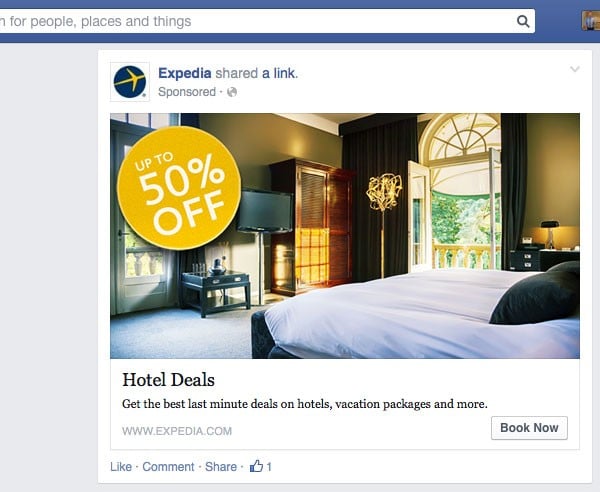

J&C Blog
Find all the latest marketing trends on the J&C Blog.

Find all the latest marketing trends on the J&C Blog.
In today's web-connected society, marketers are constantly finding ways to reach consumers online. Display ads used to be one of the most trusted weapons in a marketer's online arsenal. Sadly, the effectiveness of online display ads has been called into question. With so many online ads being served to customers on a daily basis, many consumers have "banner-ad blindness." According to DoubleClick, the average banner ad has only a 0.1% click-through rate.1 When you factor in that 50% of clicks on mobile display ads are accidental, the number of viable click-throughs is even smaller.2 So if display ads are no longer engaging consumers as effectively as we'd like, what's the solution? Many marketers and advertisers are looking to native advertising for the answer.
What is native advertising?
I'm sure many of you have heard the term native advertising thrown around quite a bit in 2014. But what exactly is native advertising? The answer to that is pretty varied depending on who you ask. However, most advertisers and marketers will agree on the following qualifications for native advertising:
What does native advertising look like?
Below are a few examples of native ads:


Why should I use native advertising?
Native ads offer several advantages to traditional display ads. Native ads break through "banner-ad blindness" because they cause the user to process the ad as they interact with the content. According to a study by Sharethrough, consumers looked at native ads 53% more often than display ads.3 Consumers were also 32% more likely to share a native ad than a display ad.
Native advertising also focuses on content marketing. Since content marketing is about creating a dialogue versus a hard sell, consumers are more likely to view the targeted content. Native advertising allows you to feature your content outside of your own channels (company website, social media, etc.). This allows you to recycle content that may not have been used recently but is still impactful for other outlets.
Challenges to native advertising
Native advertising is still a fairly new avenue for online marketing. Unlike display ads, there are no consistent standards for native ads. Because of this, it is important for companies to maintain creative management over the unique content needed for varying platforms.
Native ads also measure less in brand recall than display ads. This is most likely due to the fact that a brand's logo is more visible on a display ad than in a native ad, but still something to consider.
Gaining user trust can also take time with native advertising. The best way to overcome this is by making sure your content is relevant and provides value to the consumer and doesn't appear as an ad disguised as content.
There is also debate over whether native advertising degrades the value of true editorial content.
Are display ads dead?
Display ads are having a tough time competing in today’s digital arena. It is no longer enough to simply serve online impressions or provide brand recognition. Online ads have to break through “banner-ad blindness” in order to reach their intended audience. The fact is that general display ads just aren’t delivering the same results as other online advertising avenues like native ads or retargeted banner ads.
It’s still a little early to tell if native ads will be the silver bullet that kills off traditional display ads. However, it can’t be denied that display ads no longer pack the punch that they used to. Now is the time to try other online advertising avenues, and native advertising is certainly delivering.
Source:
Topics: Digital Marketing
303 E Wacker Drive, Suite 2030
Chicago, IL 60601
Phone: 312-894-3000
Fax: 312-894-3005